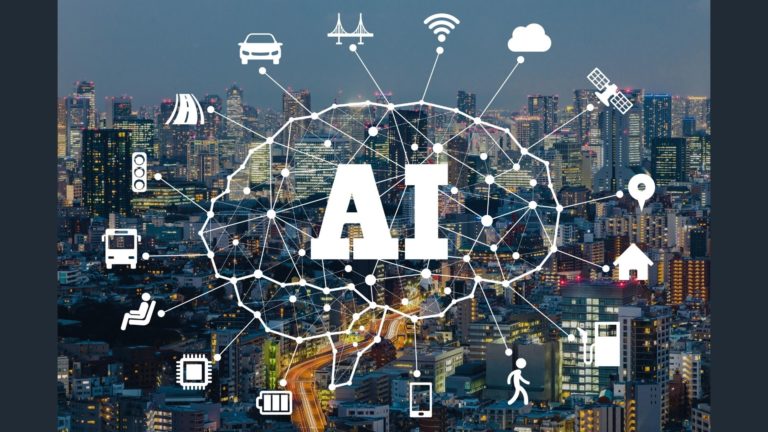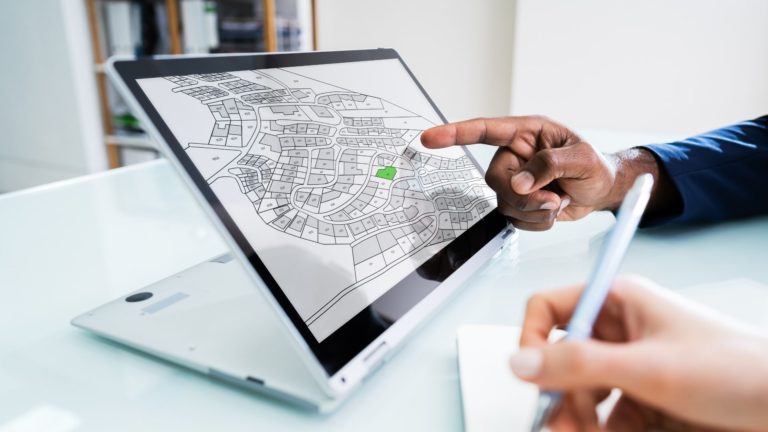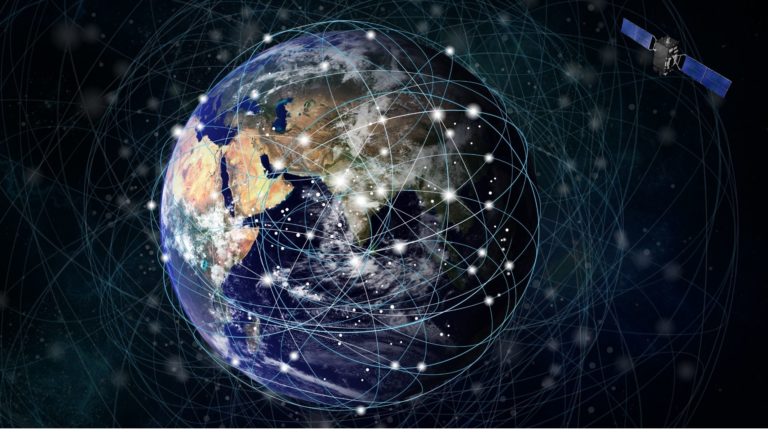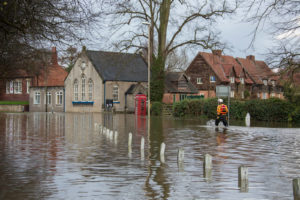-
- Building and Structure Management Industry,
- Highway and Transportation Industry,
- Power and Energy Industry,
- Railroad Industry,
- Water Utility Industry and more,
This article is focused on helping the reader clearly understand 7 of the most helpful technologies that the modern infrastructure manager can use to manage infrastructure in the most efficient, competent and cost-efficient manner.
7 Most Important Technologies That Concerns Infrastructure Managers
AI-driven Disaster Prediction: Tailor Risk Mitigation and Cost Recovery Plans for Hazardous Events

AI-powered Predictive technologies are used by infrastructure managers to ensure that infrastructure systems are not detrimentally affected by natural disasters. The resolution and data quality of hydrological models, meteorological data, ecological parameters, hazard and socio-economic data can all be fed into AI protocols to use facts to estimate impending natural disaster occurrences. When the asset information is integrated with these insights, infrastructure managers get the advantage of analysing the impact of future natural disasters on the infrastructure and create essential risk mitigation and precautionary plans to evacuate neighbouring communities and strengthen the integrity and performance of infrastructure.
- Communicate residual risks and gain parametric insurance for risk mitigation
- Computer hazardous events in all dimensions of the city or country
- Design and engineer initiatives based on interventions
- Evaluate and optimise adaptation pathways for infrastructure in disaster-prone areas
- Optimise infrastructure operations to be ready for oncoming disasters
- Quantify impacts and simulate parameters to understand the response of infrastructure at any given event
- This technology can be used by infrastructure managers to:
- Use GIS maps to disseminate proactive and early alerts that connect all infrastructure managers
Blockchain Technology: Secured and Accessible Ledger for Infrastructure Related Transactions

This technology optimises the cybersecurity portals by reinforcing data protection at every step of the transactions and eliminating frauds and threats when operating to finance infrastructure systems. Here are some of the benefits of using blockchain technology for infrastructure management.
Energy Conservation: Especially in Power and Energy and Telecommunication systems, the decentralised network enabled by the blockchain technology, the need for the dependence on intermediaries is irrelevant. Because all stakeholders can effortlessly access the data, the control over energy and cost consumed during the transactional processes can be saved, thus allowing energy sustainability and better security.
Green Nations: the improvement of infrastructure-heavy urban areas through blockchain technology is fantastic. Maximum infrastructures can be connected in an industrialised city using the information gathered by blockchain technology to control utility service systems. FOr example, the urban infrastructure managers can use the data extracted from blockchain technologies to reduce the carbon footprint in the air when infrastructure operations take place. Another advantage is that this technology can be used to have complete control over urban area-based situations like industrial waste, road traffic, organic waste management, energy consumption and more. Thus, laying a strong foreground for smarter and greener urban cities to grow with healthier, reliable and sustainable infrastructure systems.
Harness 5G: Another intriguing advantage of using blockchain technology in infrastructure management is interconnectivity between smart systems and 5G networks. This allows the industry managers to connect the nearest and the fastest routes by using tokens to optimise access to the benefits of 5G connectivity.
Digital Twin: An Interactive and Comprehensive Virtual Model of Infrastructure

The digital twin is a virtual model that mirrors the structural features of a physical component (ex: a water dam, a fridge, railroad systems, shopping malls etc.) but also indicates the conditional, structural, performance-related, environmental, financial and any other parameters that are connected to the infrastructural components.
Here are a few examples:
Water Dam Manager: The water dam managers can use this technology to interact with a virtual model (anywhere, any time) to view the quality of the infrastructure and the water. They can understand the flood-control strength of the dam, analyse the health and performance of the dam gates, comprehend the sustenance of the dam wall, pinpoint areas that should be prioritised by dam maintenance teams and more.
Post-COVID Road Managers: The digital twin technology allows a range of varied information that represents the structural, conditional and demographic impacts of roads that are laid on very large footprints (cities or a whole country). It can be regarded as an optimised single source of truth to allow road managers to survey road performances and integrate information- simple they can do a virtual reality inspection to understand where rods are mostly used, which are prone to natural disasters, which are damaged and how critical are some road conditions and more.
GIS Maps- Geolocational Data Intertwined with Infrastructure Information

GIS technology allows infrastructure managers to transform the operations using geolocational data infrastructure parameters to serve communities in a smarter, faster and well-versed manner. This technology helps the infrastructure managers to have a bird’s eye view of the infrastructure laid across larger areas by using IIoT, AI and other integration technologies to visualise insights over a well-informed map.
Here are some benefits of using GIS technology to manage and maintain infrastructure.
- Adopt effective tools for faster and secured data sharing and collaborative decision making
- Building portal systems to adopt optimised search features via interactive interfaces
- Implement a responsive portal system to leverage geospatial information
- Integrate disaster trend maps to pinpoint disaster-prone areas of the infrastructure maps Interact with infrastructure maps to gather location-specific information
- Link other information sources to the GIS layers
- Use standardised topography analytical tools
- Utilise a map that complies with standards and compliances of the regulatory bodies and policy-makers
Predictive and Prescriptive Analytics: Track Infrastructure Risk, Cost and Performance for Futuristic Decision-making

Descriptive and diagnostic analytics allows the infrastructure managers to use real-time data to understand the current parametric behaviours of infrastructure components. Predictive and prescriptive analytics takes this to a new level by analysing past trends to predict and prescribe what will happen in the future. These two types of advanced analytics are explained below.
Predictive Analytics: AI-powered predictive analytics tools allow infrastructure managers to incorporate historical and current data to predict trends in infrastructure behaviours. The performance degradation, structural waning and other changes that infrastructure undergoes will be predicted by taking infrastructure information, environmental changes, usage and maintenance procedures of the infrastructure. For example, this technology can refine asset lifecycle curves and represent the timeline of assets starting from deployment to its replacement. It uses input from diverse data sources and combines it with leading-edge systems powered by IIoT and AI to develop insights into the infrastructure’s future. This allows the infrastructure managers to gain all knowledge needed to meet the maintenance requirements of the infrastructure.
Prescriptive Analytics: Understanding the sophisticated and event-driven responses that the infrastructures managers should take after understanding the predicted insights. This is why prescriptive analytics tools are used to progressively and proactively respond to future infrastructure events even before they occur. These advanced analytics models are powered by AI to automatically display the counteractive responses the managers should take to avoid the occurrence of future infrastructural threats, risks or failures. Thus, saving time, money and unnecessary efforts in ensuring the optimal performance, investment and counter risk properties of the infrastructure.
Satellite Data Analytics: Keeping Track on Hard-to-reach Infrastructure

- Analyse data at different temporal and spatial resolutions
- Deploy AI-driven automated analytics to evaluate infrastructure on large-scale footprints
- Enable continuous (24/7) monitoring of infrastructure via the best surveillance technologies using optical and hyperspectral imagery
- Extract robust information of the whole-life value of assets to make asset profiles more informative and factual
- Get a better vision of the failure or deterioration of critical infrastructures like bridges, building dams, tunnels, power grids and more.
- Implement effective, scalable processing systems to grant knowledge to all infrastructure managers
- Schedule effective infrastructure maintenance systems and make informed operations develop with better visualisation of infrastructure
- Ability track individual areas or disaster-prone cities to mitigate the risks imposed on infrastructure by natural disasters
Simulation Platforms: Event-driven Analysis in Infrastructure

Simulation technology is another important technology feature that can be used by infrastructure managers as a generic visualisation tool to virtually view the past, present and probable future events of infrastructures’ conditional and structural parametric changes. Hybrid simulation platforms can be developed to imitate the operational performance, renewal requirements, maintenance strategies, budget scenarios, sustenance, longevity, remaining useful lifetimes and other parameters in any given event- even hypothetical ones.
These capabilities allow the simulation utiliser to avoid asset threatening outcomes, wastage of resources and unnecessary time consumption when managing and maintaining assets at any given time. The managers can simply key in parameters of a certain event ( ex: a flood event) and understand how the infrastructure will be affected by an external impact and what are the necessary risk mitigation plans and investments that they have to undergo in dynamic events. Here are some examples where the simulation technology is applied by infrastructure managers.
Wastewater Industry: Simulation technologies to represent the event-based models of wastewater collection, pumping, treatment and water reuse reticulation lines to understand the resilience of current infrastructure in impending wastewater LOS demands and OEE levels.
Transportation Industry: This technology allows road infrastructure managers to gain insights on the performance of the road infrastructure for the next 10 years ahead. They can use scalable models to see how the roads and bridges will react during hurricanes, floods, landslides and other events that might occur in disaster-prone areas and take precautionary actions to preserve the wellbeing of the communities and the natural resources.
Why Tigernix is The Best Infrastructure Technology Solution Provider in Australia
There is Still So Much Space For Smart Infrastructure Systems To Grow
Newly-emerging technologies that are still at their premature stages like 4D printing, smart device instrumentation and advanced data technologies like Quantum Computation will allow infrastructure to be self-healing, smarter and less of a hassle for infrastructure managers. So, we are entering a combined-technology age where infrastructure management and maintenance initiatives will grow more and be less complicated. This is all the more reason for infrastructure managers to be ready to leverage all technological advancements.







